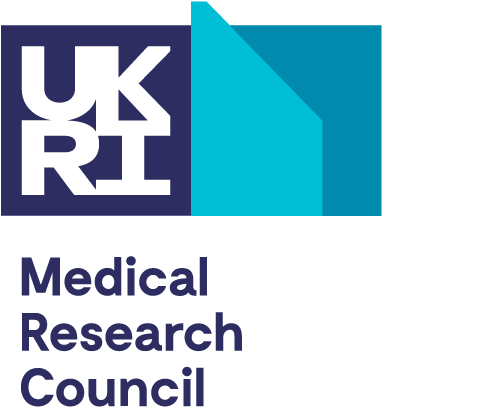If you are involved in healthcare technology or translational research, such as in the development or repurposing of a ‘product’ for the diagnosis, prevention, monitoring or treatment of a health condition, then these pages will help you understand the relevant regulation.
The precise regulatory path and evidence to demonstrate that a product is safe and effective is specific to the product, commercial intent and where you plan to market or trial your product. For the UK, the best place to get bespoke regulatory advice is from the Medicines and Healthcare products Regulatory Agency (MHRA) Innovation Office. You may also have access to local expertise (like a research sponsor office, translation or technology transfer office).
EU Exit has changed the UK regulatory environment for healthcare products. You can find details in the MHRA EU Exit guidance and NHS Health Research Authority (HRA) guidance for health and social care researchers.
More change is coming. MHRA has published their response to the medical devices consultation. New legislation is expected to come into force in July 2024. You can learn more in implementation of the future regulations. MHRA have also consulted on clinical trials legislation and are currently analysing responses.
Legal definitions
New UK regulations are in development and so the precise wording of the definitions may change. We list which regulations these definitions are taken from and signpost further information on the relevant requirements.
Experimental medicine (EM) is a broad term and has no legal definition in the UK. Some EM studies will fall under the legal definitions, those that don’t should be managed according to local university, NHS policy and professional codes of conduct. Examples of such studies include surgical or physiotherapy interventions; or medicinal studies that explore mechanism of action, or where the medicine is used as a tool rather than testing safety or efficacy. You can learn more about managing risk within these studies in experimental medicine. While the risk management information you will find there is useful for all studies, it would not be sufficient for a clinical trial of an investigational medicinal product or a clinical investigation of a medical device.
Clinical trial of an investigational medicinal product (CTIMP)
The best way to determine if your trial is a CTIMP is to use the MHRA algorithm (PDF, 68KB) and discuss this with your sponsor.
A ‘clinical trial’ means any investigation of human subjects, other than non-interventional trials, intended:
- to discover or verify the clinical, pharmacological or other pharmacodynamic effects of one or more medicinal products
- to identify any adverse reactions to one or more such products, or
- to study absorption, distribution, metabolism and excretion of one or more such products
‘Investigational medicinal product’ means a pharmaceutical form of an active substance or placebo being tested, or to be tested, or used, or to be used, as a reference in a clinical trial, and includes a medicinal product which has a marketing authorisation but is, for the purposes of the trial:
- used or assembled (formulated or packaged) in a way different from the form of the product authorised under the authorisation
- used for an indication not included in the summary of product characteristics under the authorisation for that product
- used to gain further information about the form of that product as authorised under the authorisation
CTIMPs are governed by the Medicines for Human Use (Clinical Trials) Regulations 2004 and its amendments. The Clinical Trials Tool Kit will help you with the relevant legal requirements. You can find further resources for CTIMPs in clinical trials of medicines and advanced therapies.
You can find guidance on risk management relevant to all types of studies, including CTIMPs, in experimental medicine.
Medical devices and clinical investigations
A medical device means an instrument, apparatus, appliance, material or other article, whether used alone or in combination, together with any software necessary for its proper application, which is intended by the manufacturer to be used for human beings for the purpose of:
- diagnosis, prevention, monitoring, treatment or alleviation of disease
- diagnosis, monitoring, treatment, alleviation of or compensation for an injury or handicap
- investigation, replacement or modification of the anatomy or of a physiological process
- control of conception
And, does not achieve its principal intended action in or on the human body by pharmacological, immunological or metabolic means, even if it is assisted in its function by such means.
It includes devices intended to administer a medicinal product or which incorporate as an integral part a substance which, if used separately, would be a medicinal product and which is liable to act upon the body with action ancillary to that of the device.
Standalone software and apps can be medical devices.
Medical devices are governed by the UK Medical Devices Regulations (MDR) 2002 in Great Britain or ‘GB’ (England, Wales and Scotland) and EU MDR in Northern Ireland. A clinical investigation, a trial that helps determine safety and performance, may be required depending on classification. You can find resources on medical device development in medical devices and in vitro diagnostic medical devices.
You can find guidance on risk management relevant to all types of studies, including medical devices, in experimental medicine.
In vitro diagnostic medical device
‘In vitro diagnostic medical device’ means a medical device which is a reagent, reagent product, calibrator, control material, kit, instrument, apparatus, equipment or system, whether used alone or in combination; and is intended by the manufacturer to be used in vitro for the examination of specimens, including blood and tissue donations, derived from the human body, solely or principally for the purpose of providing information:
- concerning a physiological or pathological state
- concerning a congenital abnormality
- to determine the safety and compatibility of donations, including blood and tissue donations, with potential recipients
- to monitor therapeutic measures
and includes a specimen receptacle but not a product for general laboratory use, unless that product, in view of its characteristics, is specifically intended by its manufacturer to be used for in vitro diagnostic examination.
Standalone software and apps can be in vitro diagnostic medical devices.
In vitro diagnostic devices are governed by the UK Medical Devices Regulations 2002 in GB (England, Wales and Scotland) and EU IVDR in Northern Ireland. You can find resources around medical devices development in medical devices and in vitro diagnostic medical devices.
Guidance for risk management relevant to all types of studies, including IVDs, is found in experimental medicine.
You can learn more about the wider regulatory landscape for health research in understanding health research.
We also provide guidance on:


